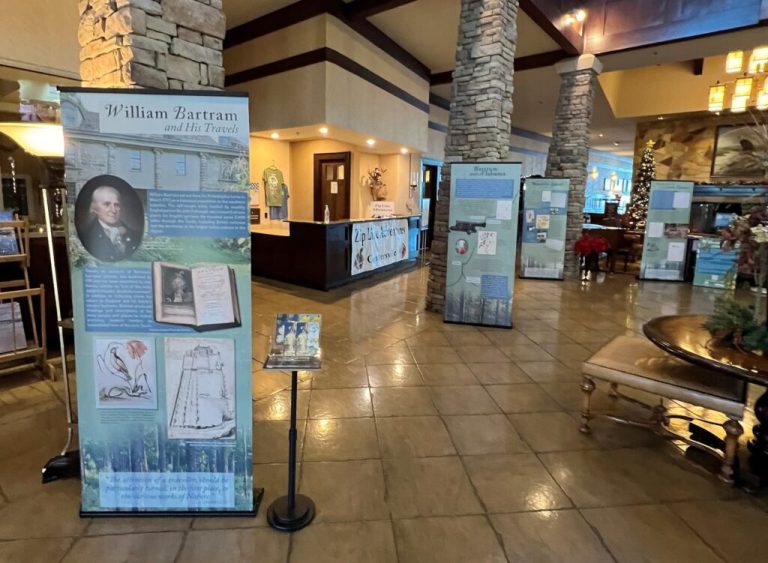Reviewed by: Caleb Turrentine
10 amazing spiders of Alabama
Reading time: 4 minutes

When most people think of spiders, they think of creepy crawlies lurking in their homes or in the forest.
However, spiders aren’t as scary as you might think. They actually play a crucial role in our ecosystem and act as a natural form of pest control.
Here in Alabama, where biodiversity thrives, spiders of all colors and sizes are essential to the balance of nature.
Keep reading to learn about 10 amazing spiders that call Alabama home!
1. Jumping Spider


Jumping spiders are adorable and tiny spiders that have many different species.
Some species you can expect to see in Alabama include:
- Bold Jumper
- Cardinal Jumper
- Pantropical Jumper
- Regal Jumpers
They are also unique compared to other spiders due to their intelligence and methods of hunting.
Fun Facts:
- Stalk their prey instead of trapping them in webs
- Have the best vision of any land invertebrates
- Some species are vegetarian
- Over 5,000 species worldwide
- Popular + docile pets
- Non-venomous
2. Whitebanded Crab Spider

The whitebanded crab spider is a small crab spider commonly found in flowers.
Fun Facts:
- Females can change color to match flowers they’re hunting on
- Don’t build webs to catch their prey; instead, wait on flowers + ambush insects
- Non-venomous
3. Arrow-Shaped Micrathena

The Arrow-Shaped Micrathena are known to spin elaborate and beautiful webs.
Fun Facts:
- Females spin intricate webs while males are rarely seen
- Females boast striking colors
- Non-venomous
4. Southern Black Widow

Although this is the only venomous spider on the list, there’s no reason to be afraid when you see one.
Like all spiders, they are a crucial part of controlling invasive pests in our environment and even your garden.
They are also rather timid with bites unlikely to be fatal—just be sure to leave them alone.
Fun Facts:
- Despite their name, females rarely eat their mates
- Only adult females inflict dangerous bites
- Male black widows are much smaller + are usually brown or grey
“Spiders are great at taking care of pests and invasive insect species. They also eat mosquitos and other unwanted bugs that may carry diseases. They are beneficial to gardens and the environment as a whole.”
River Collins, Wildlife Ecology and Management Stormwater Inspector
5. Spiny Orb Weaver

Don’t let this spider’s tiny size fool you—It has a major talent for weaving webs.
They are also extremely common and can be seen everywhere throughout Alabama.
Fun Facts:
- Have increased activity during the fall
- Lifespan is about one year
- Non-venomous
6. Green Lynx Spider

The Green Lynx spider is bright-green and usually found on green plants.
Fun Facts:
- Don’t build webs, but use silk to create hunting platforms on plants
- Only spiders besides spitting spiders that spit venom
- Can project venom up to 8 inches
- Have a painful but non-venomous bite
7. Furrow Orb Weaver

Furrow Spiders are common orb-weavers found around homes and other urban places.
Fun Facts:
- Build orb-shaped webs that are usually low to the ground
- Females need protein to make silk + build eggs
- Non-venomous bite similar to a bee sting
8. Golden Orb Weaver

You’ve probably seen these large spiders around your home, but don’t worry—they are pretty harmless.
Fun Facts:
- Web silk can be used to make fishing lures, traps, nets + more
- Females are much larger than males
- Non-venomous
9. Orchard Spider

Like the name implies, this small, non-venomous spider is commonly found in orchards and gardens.
Fun Facts:
- Latin name is “Leucauge Venusta,” which translates to “beautiful”
- Charles Darwin named them
10. Wolf Spider

Wolf spiders are large, nocturnal hunters often found in leaf litter and grassy areas.
They are non-venomous and unlikely to bite.
Fun Facts:
- Use their speed to catch prey instead of spinning webs
- Can run up to two feet per second
- Mother’s carry egg sacs for 20–40 days then carry hatched babies on their backs
What is your favorite spider, Alabama? Let us know by tagging The Bama Buzz on Instagram, X, Facebook + LinkedIn.



